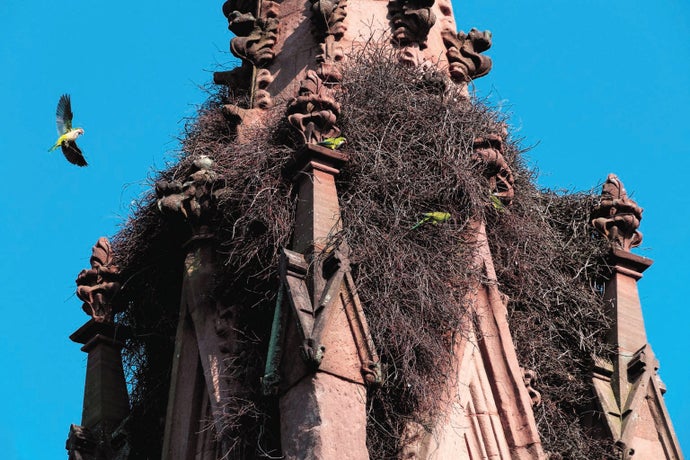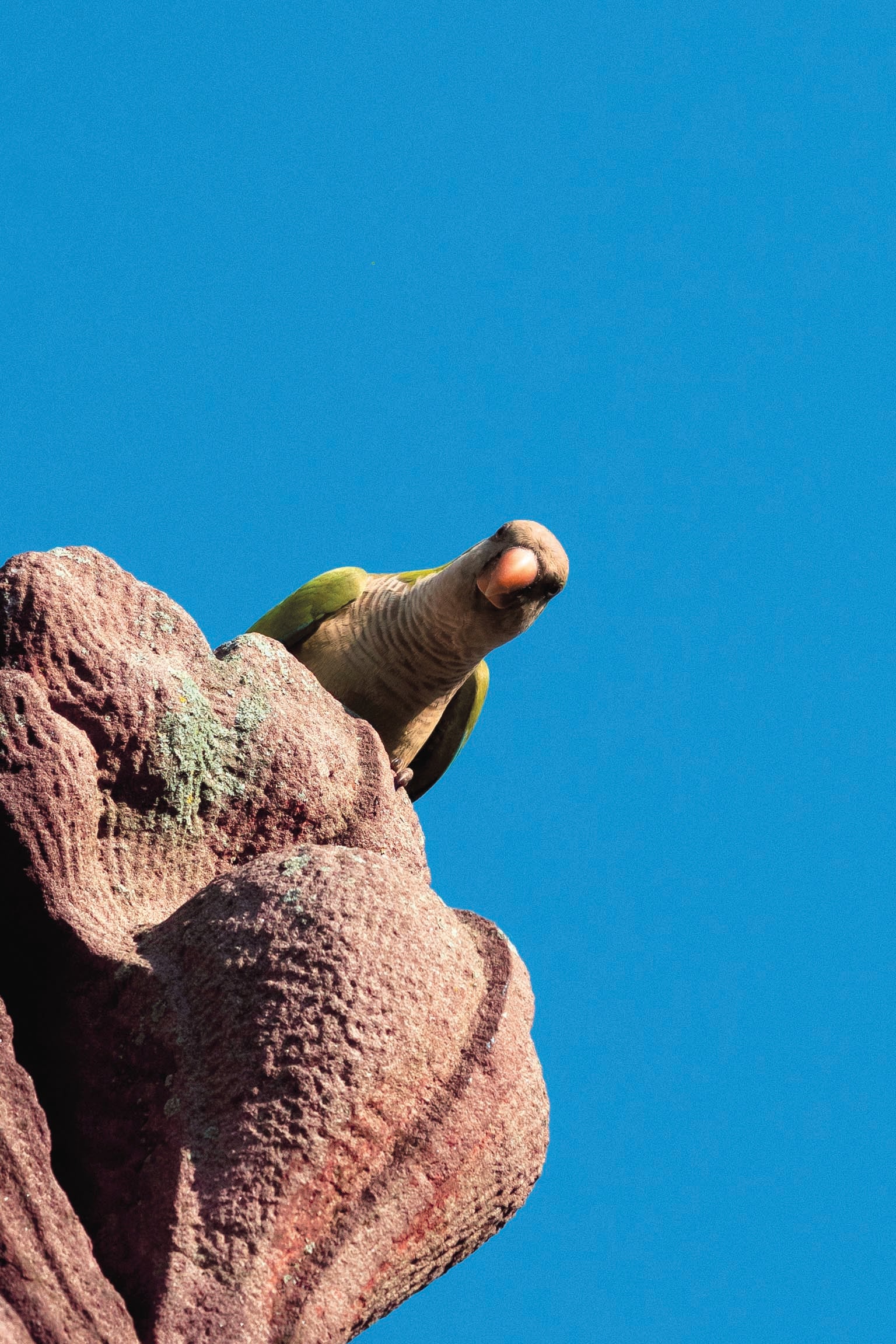Parrots Are Taking Over the World
At Brooklyn's Green-Wood Cemetery the living get as much attention as the dead. Groundskeepers maintain the 478-acre historic landmark as an arboretum and habitat for more than 200 breeding and migratory bird species. But many visiting wildlife lovers aren't interested in those native birds. They're at the entryway, their binoculars trained on the spire atop its Gothic Revival arches. They've come to see the parrots.
The urban cemetery hosts dozens of long-tailed, dove-size parrots, lime green with gray accents on their foreheads and chests, called Monk Parakeets. (Parrots and parakeets are part of the same family.) These birds maintain barrel-size stick nests not just at this cemetery but across the city. They live in nearby Connecticut, too. Monk Parakeets and other species of parrots are in Chicago, Miami, Tampa, New Orleans, Los Angeles, Houston, Dallas, San Antonio and Austin. Red-masked Parakeets live on Telegraph Hill in San Francisco. Rosy-faced Lovebirds decorate the palm trees of Phoenix. Parrots are present in all of Mexico's 10 largest cities, as well as Barcelona, Amsterdam, Brussels, Rome and Athens. They're in Tel Aviv. And Singapore. All around the world, parrots are taking over with a resounding SQUAWK!!!
Today at least 60 of the world's 380 or so parrot species have a breeding population in a country outside their natural geographical range. Each successful transplant has its own story: some are benign, others a threat to the local wildlife; some are abundant in their home ranges, whereas others rely on cities as a refuge from extinction. All are by-products of the pet trade and animal trafficking around the world. Because they're parrots, they're smart, adaptable, creative and loud. “They're animals that are really social, and they live in cognitively complex social environments,” says Grace Smith-Vidaurre, a postdoctoral fellow at the Rockefeller University and the University of Cincinnati, who studies the birds. “They're like humans in a lot of ways.”
The Brooklyn parrots' story begins in South America. When Smith-Vidaurre started her research on the origins and behavior of Monk Parakeets, she thought it was important to visit the birds in their native range, which extends across parts of central South America, including Argentina and Uruguay. She asked the scientist who sponsored her visit whether it would be a challenge to find the birds. No, he said; he could hear them outside his window—they're as common there as pigeons. They live in cities, feed on agricultural crops and in gardens, and nest in exotic trees and power lines.
Native to South America, Monk Parakeets have made themselves at home in a number of U.S. cities. Credit: Ali Cherkis
Read Much More Here: Scientific America








